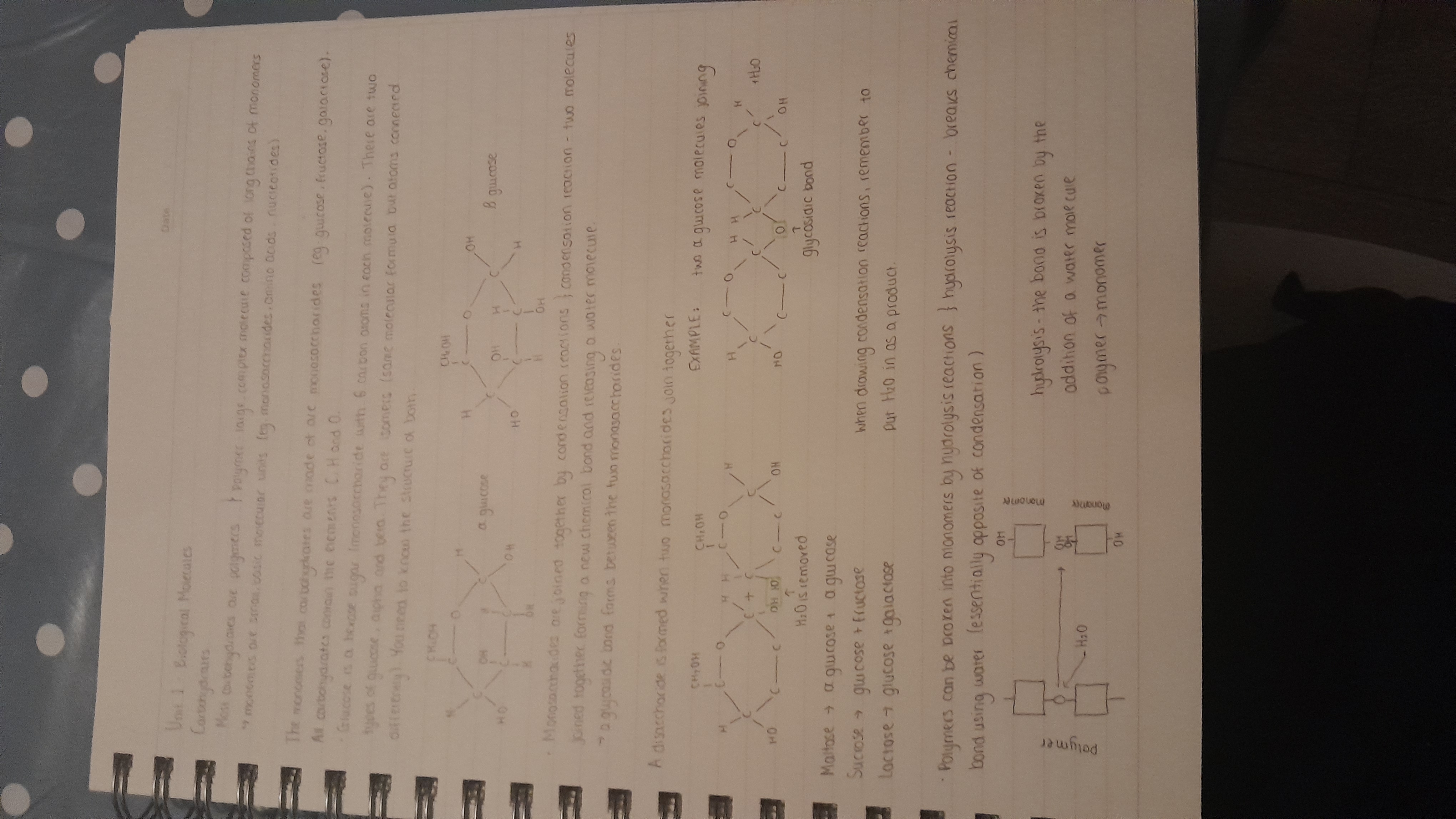Explain the structure and functions of carbohydrates, including monosaccharides, disaccharides, and the processes of condensation and hydrolysis.

Understand the Problem
The text explains the structure and types of carbohydrates, focusing on monosaccharides and their bonding processes, including condensation and hydrolysis reactions. It details the formation of disaccharides and how polymers can be broken down into monomers.
Answer
Carbohydrates are monosaccharides, disaccharides, polysaccharides. Condensation forms disaccharides; hydrolysis breaks them.
Carbohydrates consist of monosaccharides (simple sugars), disaccharides (two joined monosaccharides), and polysaccharides (long chains of monosaccharides). Monosaccharides form disaccharides through condensation reactions (water-releasing), while hydrolysis (water-adding) breaks them down.
Answer for screen readers
Carbohydrates consist of monosaccharides (simple sugars), disaccharides (two joined monosaccharides), and polysaccharides (long chains of monosaccharides). Monosaccharides form disaccharides through condensation reactions (water-releasing), while hydrolysis (water-adding) breaks them down.
More Information
Monosaccharides like glucose are the building blocks for more complex carbohydrates. Condensation reactions are key in forming bonds, while hydrolysis is crucial for digestion and energy release.
Tips
Remember to differentiate between the condensation and hydrolysis processes to avoid confusion about how bonds form and break.
Sources
- Structure and Function of Carbohydrates | Biology for Majors I - courses.lumenlearning.com
- Carbohydrates (article) | Chemistry of life - Khan Academy - khanacademy.org
- Disaccharides - Definition, Function, Structure & Examples - BYJU'S - byjus.com
AI-generated content may contain errors. Please verify critical information